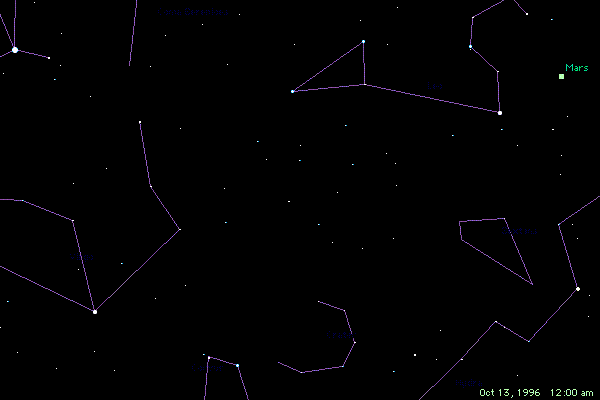Read this post in Kannada
If you are a regular night sky-watcher then you might be aware of “Retrograde Motion”, if not, there is a good chance you might have heard of the term. It is generally said that planets always appear to move in one direction from one night to the next, but in between for a short duration of time they seem to move in the opposite direction, which is called Retrograde motion.
What is Retrograde Motion?
So, what exactly is Retrograde Motion? Do planets really change the direction of their movement backwards and again decide to get back on their original track The answers to these questions are quite simple, but deviates slightly from what we have presumed conventionally.
To define ‘Retrograde Motion’ in proper terms, it is the apparent change in the motion of the planets in the sky which is an illusion caused due to the relative positions of the planets around the Sun in their Orbit.
Let’s understand it in a simple way; what it is and how is it caused?

Normally, when observed with respect to the background stars, all the planets move from west to east and this direction is same as that of Earth’s direction of orbiting around the Sun . This motion is called Prograde Motion. But periodically it is observed, for a certain duration, the planets seem to move in reverse direction, i.e. to retrograde towards west.
From Earth, if you observe the planet each night, around the same time, you’d notice that the planet would slowly drift towards the east and during retrograde motion, it would appear to take leaps towards the west between observations.
You can notice in the image here how Mars executes retrograde motion as it leaves Leo and enter Virgo.
What Causes Retrograde Motion?

As previously stated, this motion is purely an illusion. No planets ever shift their direction of motion around the Sun. So how is this illusion caused?
An inner planet which completes its revolution around the Sun sooner than its outer planets, occasionally passes close to other planets. This is when the retrograde motion seems to happen.
In case of Earth and Mercury, we observe retrograde motion of Mercury just before it passes closest to us for few weeks. As Mercury has smaller orbit than us and completes one revolution around sun for every 88 Earth days, we can observe this apparent backwards movement almost four times each year.
For explaining the case of Earth with other outer planets such as Mars, Jupiter and Saturn, we see these planets set in prograde motion almost always before Earth’s passing near these planets. Once the Earth moves past anyone of them, say Mars, it will enter its retrograde mode, which solely happens because Earth now is ahead in the relative position in its orbit around the Sun compared to Mars.
In our Solar System, we can see the superior planets, the planets which are outside Earth’s orbit to be in Retrograde motion for longer period which can be for few months since they have bigger orbit than Earth and therefore takes more time to catch up with the distance.
An Analogy Can Help!
Retrograde motion can be better understood with an example from our daily life.
Imagine a situation on a busy road… Consider two fellow passengers travelling in two different cars and let them be travelling at two different speeds along separate lanes, one moving a little behind the other. Let’s say Car A was behind the car B and after some time by gaining on its track, it will surpass the car B.
Now if we see from the point of view of the passenger who is in car A, that person will observe the car B to be moving in same direction as that of his car, when the car A was behind car B. But once car A moves ahead, the car B will seem to start moving backwards, though both the cars are still moving in same direction.
Here, car A can be compared to the inner planet and the car B to the outer planet.
Here’s a video by Vox that explain the phenomenon in layman terms.
Clear Skies!
In a nutshell, we can say that Retrograde motion which has been a crucial topic of discussion and debate for ages is just a mere illusion created due to the relative positions of the planets around the Sun. Whatever the arguments, it is always a pleasure to notice the planets every night, and such astronomical phenomena only make sense when you practice stargazing over a long period of time, observing the movement every single day.






